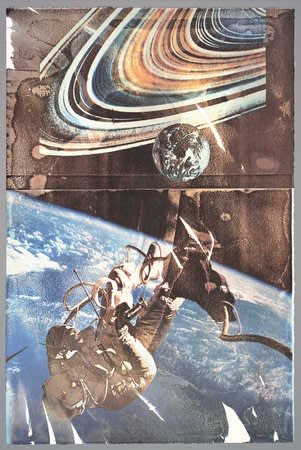
NASA
Untitled photograph from the Apollo 11 mission, July 1969
Similar to the influx of new innovations during the Industrial Revolution, the Space Age encompasses a groundbreaking period of developments in technology and ideas surrounding larger cultural influences, namely the “space race” and the Cold War period between 1940 and 1963. The movement’s design is largely concerned with the conflicting feelings at the time: promise of renewal through technological solutions balanced with fear of nuclear war. An ever-awareness of the contradictory nature of technology became the central theme.
In design, this period birthed two well-known stylistic movements, known as the Atomic Age and Space Age. Generally speaking, Atomic Age design was concerned with larger structures in the realms of architecture and industrial design, while Space Age design was more concerned with consumer-accessibility, spreading into areas like fashion, interior design, and even animation and illustration styles. Space Age design is often associated with pop art due to its mainstream nature and placement in common spaces such as bowling alleys and diners. Atomic Age design concerns itself more with the science of atomic particles, mimicking images of particles to reproduce in textile patterns, industrial materials, countertops, wallpaper, and dishware. In addition, star and galaxy motifs emerged in this movement, which share many similarities with mid-century modern movement of the same period, as well as Googie architecture. The current resurgence of these mid-century space-inspired designs is called retrofuturism.
Important works in the Atomic Age style include Charles and Ray Eames’ “Tandem Shell Seating” chairs, which use sweeping curves, vivid colors, and gravity-defying construction to capture the complexities of the age within a functional object. Similarly, Eero Saarinen’s “Tulip Chair” for the Knoll company features modernist lines and experimental materials, while Frank Lloyd Wright’s gorgeous Taliesin 1 armchair resembles a blooming origami sculpture. In this same period, French designer Pierre Cardin stepped into the world of furniture, using his avant-garde fashion eye to translate ideas from fabric onto sculptural forms that utilize monochromatic color schemes, curved and wavy lines, and deconstructed layers.

Charles and Ray Eames
Herman Miller Tandem Shell Seating, 1963

Eero Saarinen
Knoll Tulip Side Chair, 1956
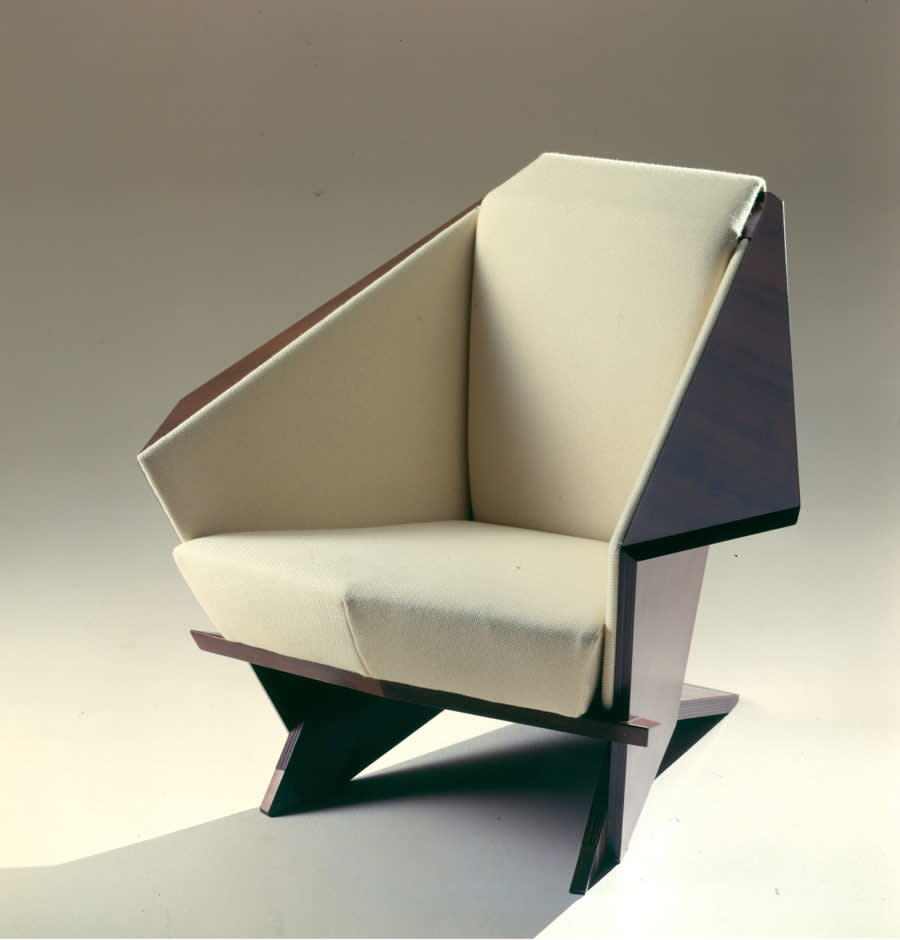
Frank Lloyd Wright
Taliesin 1 Armchair, 1949
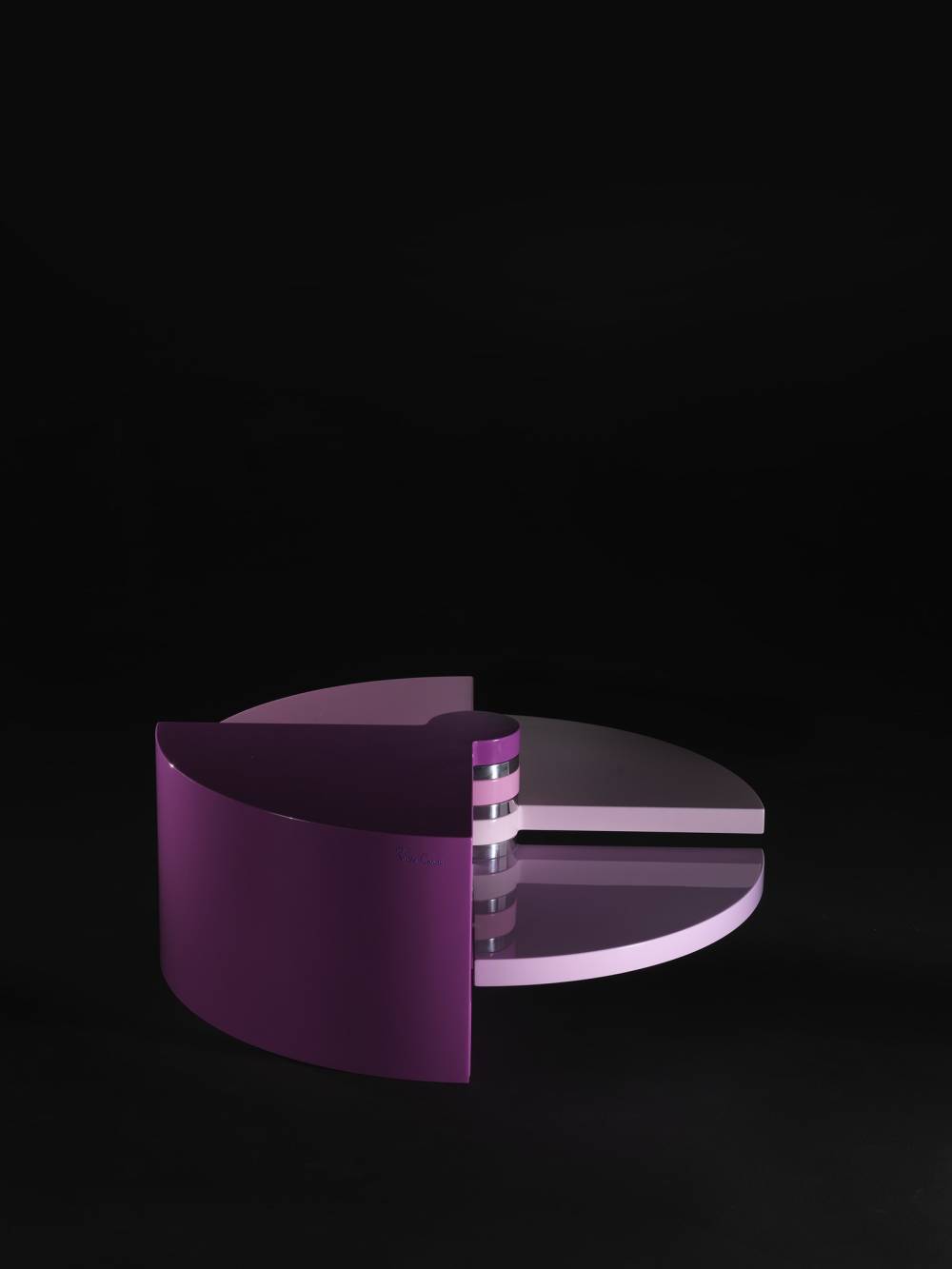
Pierre Cardin
Éventail, A folding coffee table, 1984
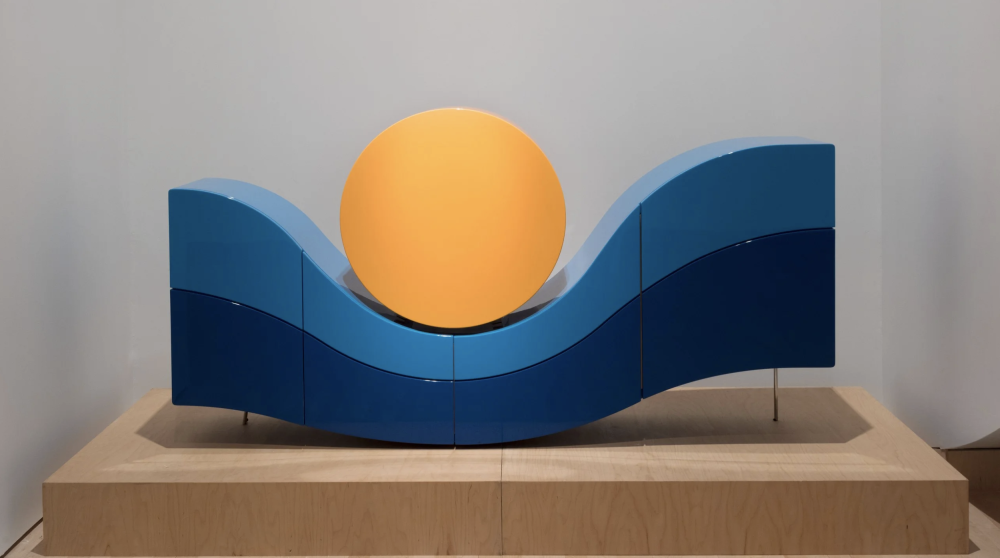
Pierre Cardin
Lacquered Dresser, 2018
The NASA insignia, perhaps one of the most famous and widely recognized symbols of Space Age design, was created by James Modarelli in 1959. Its iconic blue circle, white text, and red aviation symbol was nicknamed the “meatball,” while the sleek, modern symbols represent a planet, the stars, aeronautics, and space travel. In 1975, NASA replaced the logo with a text-based “worm” type composed of red connected letters. The logo was retired in 1992, and the classic “meatball” was brought back. The NASA seal, used for formal purposes such as awards and ceremonies, is a “dressed up” version of the original logo, taking a more illustrative form in comparison to its minimalist counterpart. NASA also designs special patches for particular missions, representing the mission’s purpose, and even some robotic probes in space have specially designated patches.
Some of the most iconic graphic design works from the Space Age period actually come from science fiction novels and pulp magazines. Works like Ray Bradbury’s Fahrenheit 451 and Aldous Huxley’s Brave New World feature heavy emphasis on illustrative visuals. Pulp sci-fi magazines full of fantastical, vibrant sketches of space travel, extraterrestrials, otherworldly landscapes, robots, and technology are some of the most recognizable images of the time. These genres tend to be seen as “low” art and extremely disposable – somewhat ironic given that the images conjured by these storytellers are the most long-lasting in the public conscience, transcending through generations who don’t remember a time before space exploration.

NASA
James Modarelli, Insignia, 1959

NASA
“Worm” logo, 1975
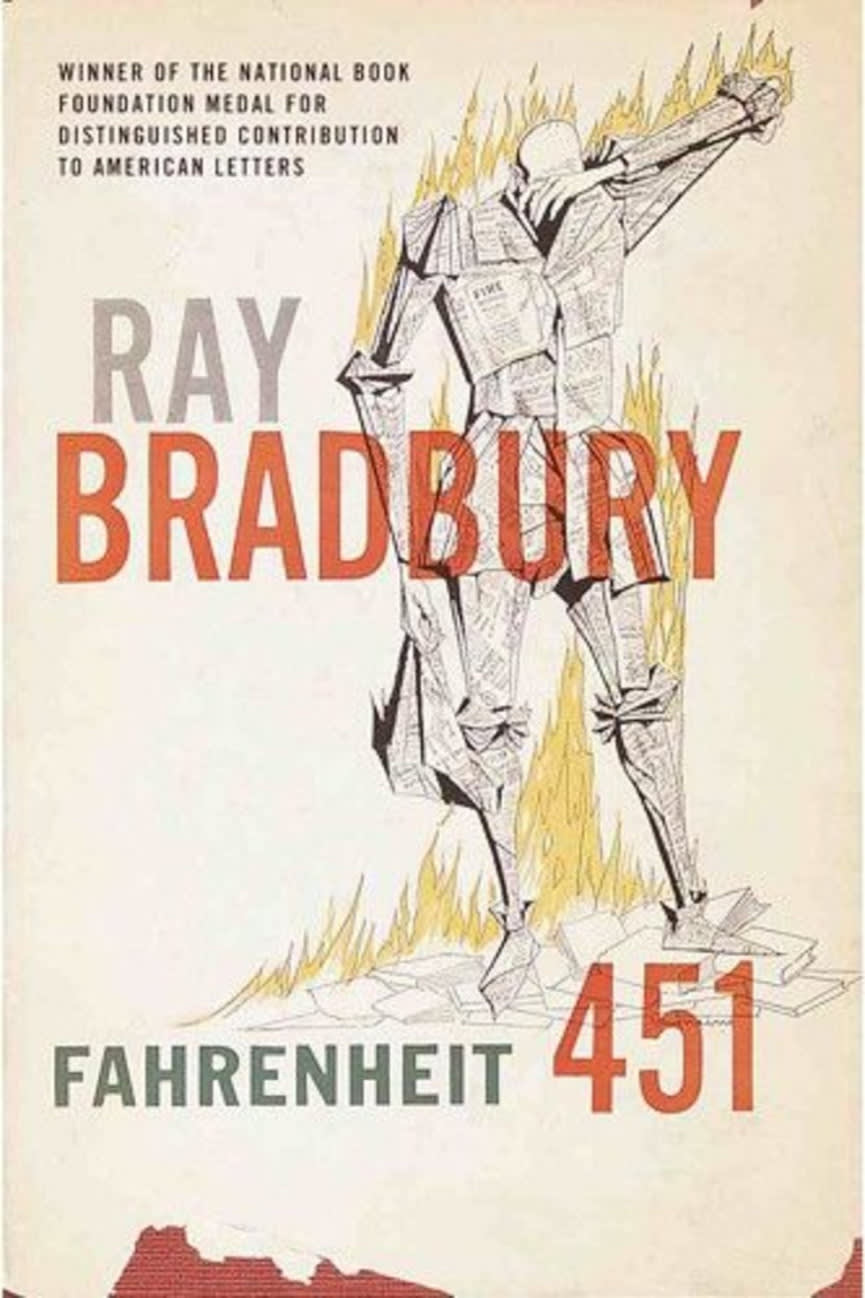
Ray Bradbury
Fahrenheit 451
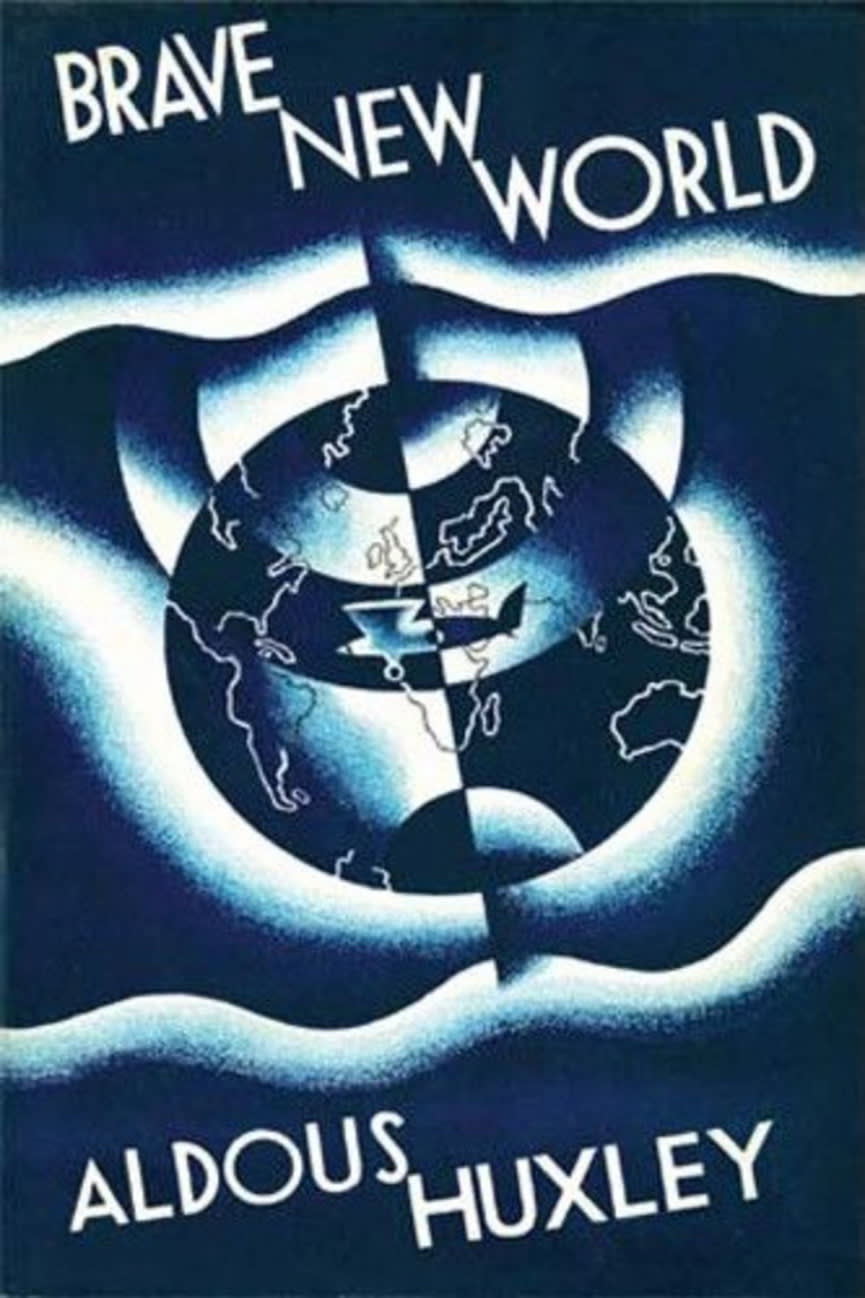
Aldous Huxley
Brave New World
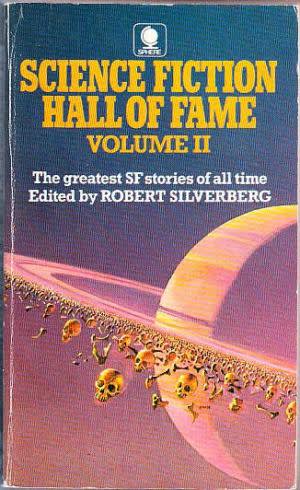
Science Fiction Hall of Fame, Volume II
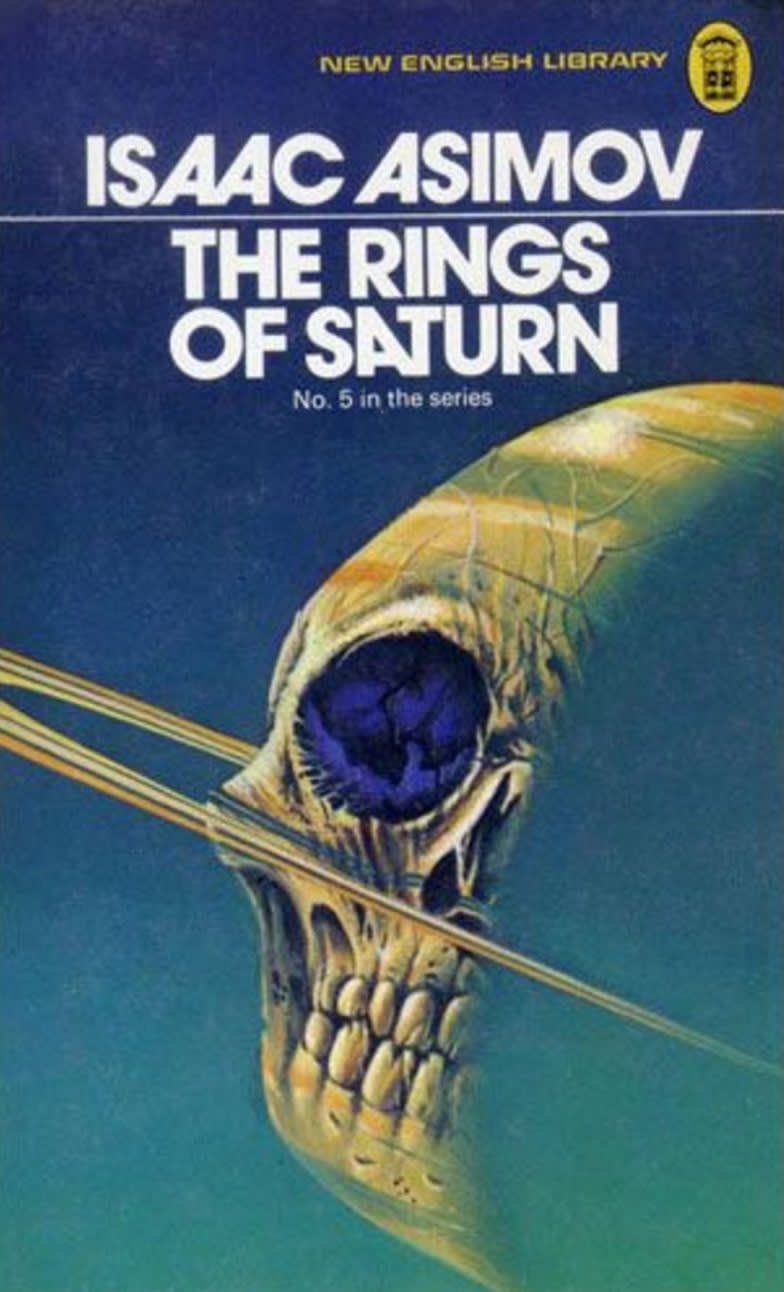
Isaac Asimov
The Rings Of Saturn

Infinity
Science Fiction Magazine, 1955
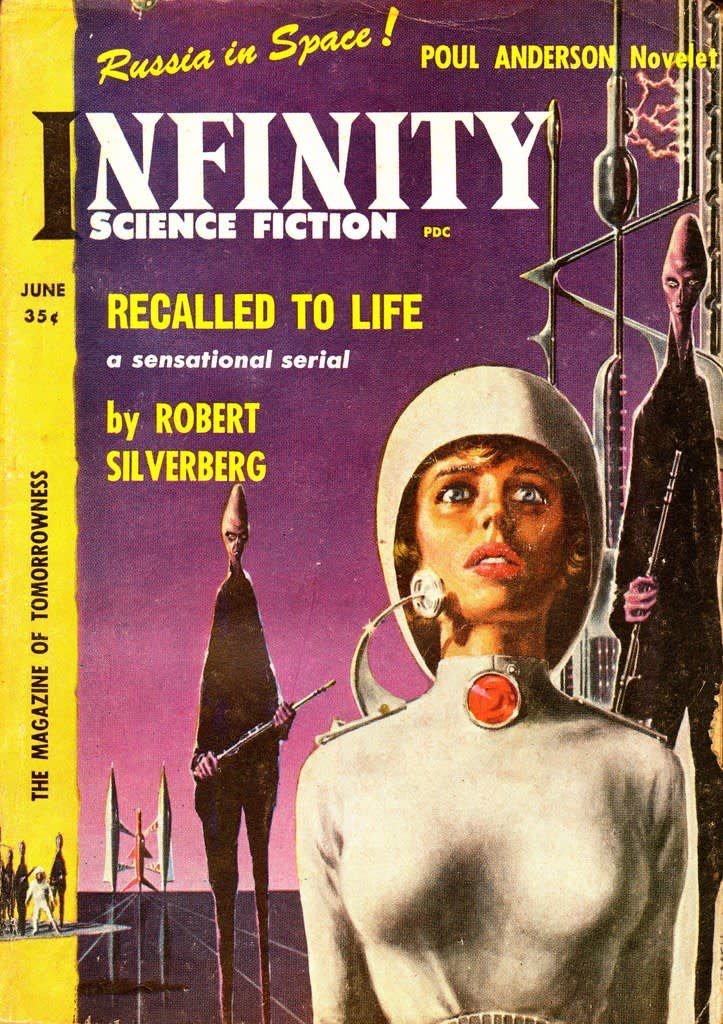
Infinity
Science Fiction Magazine, 1958
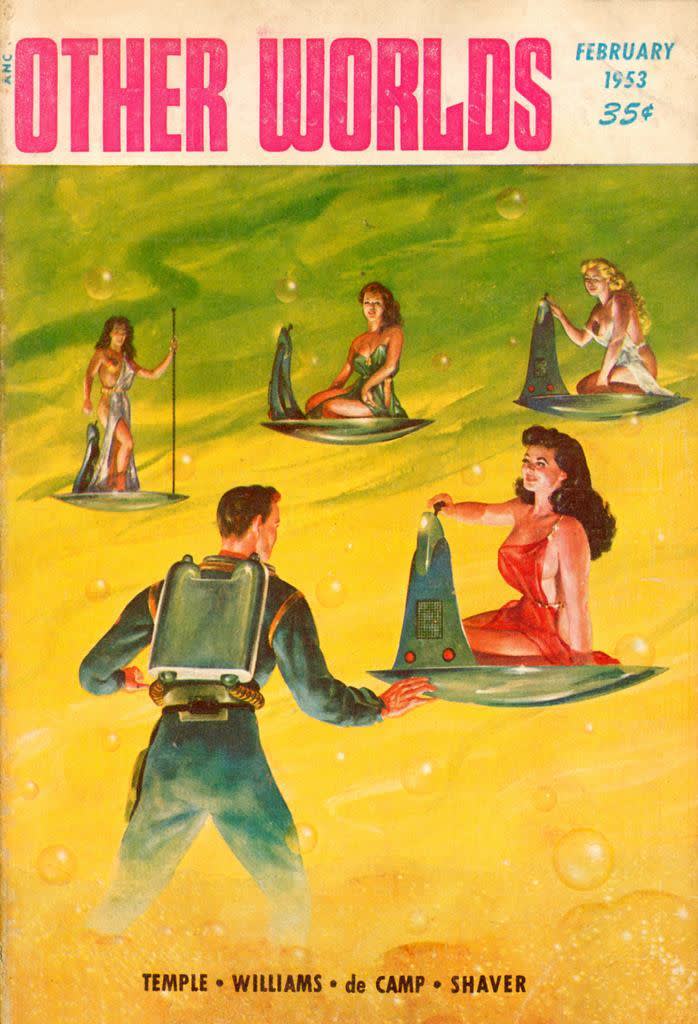
Other Worlds
Science Fiction Magazine, 1953
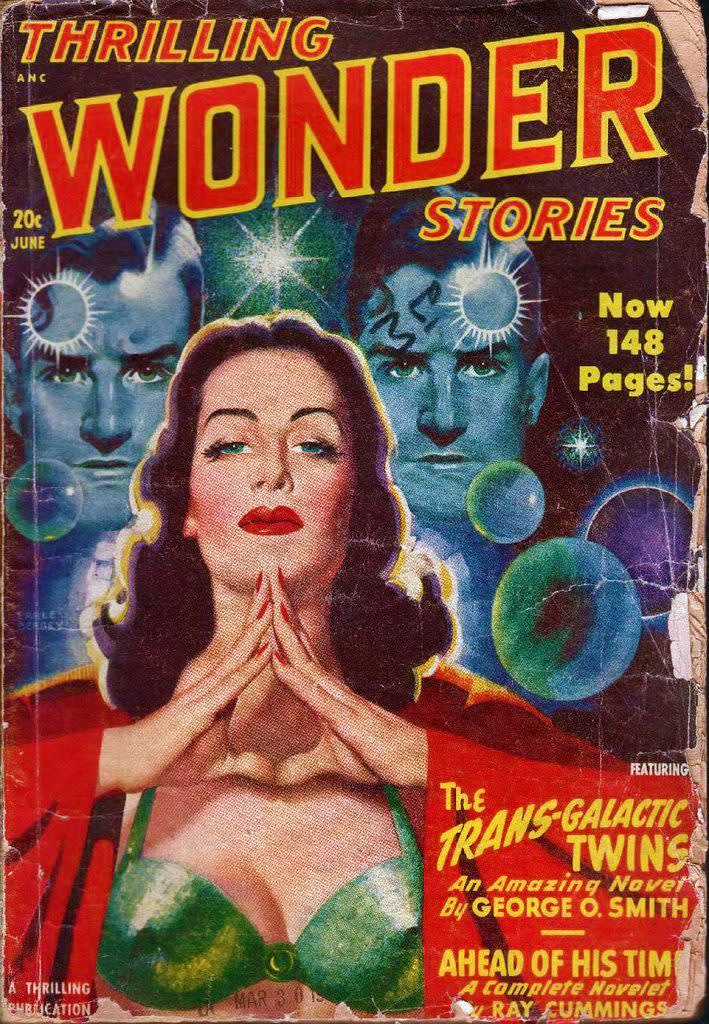
Thrilling Wonder Stories
Science Fiction Magazine, 1948
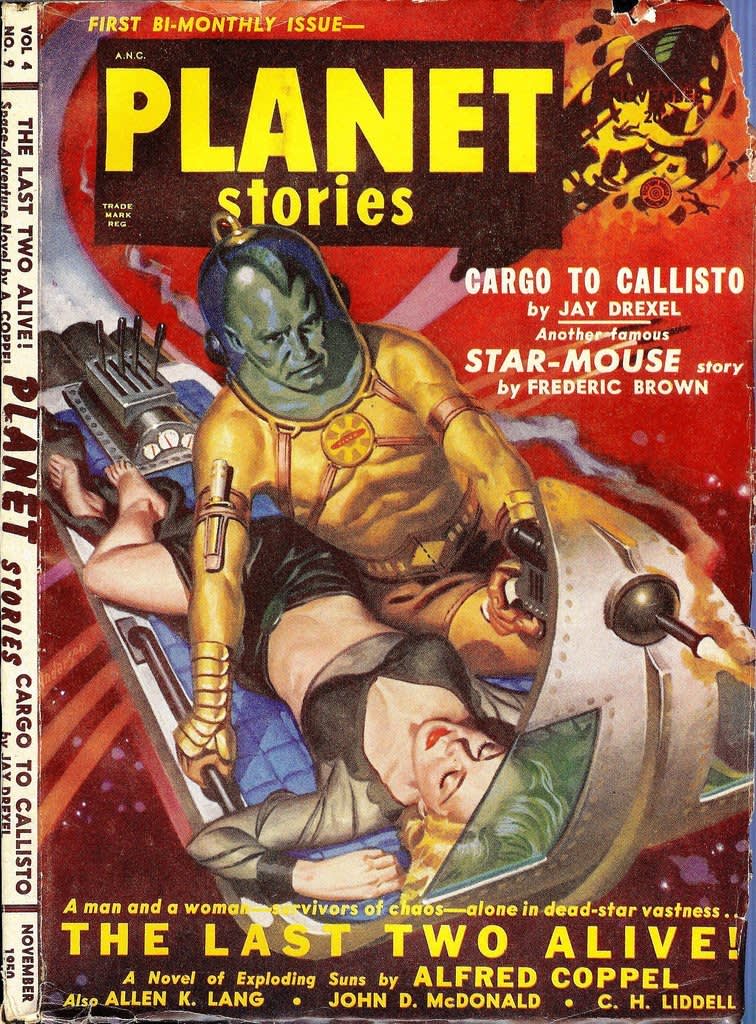
Planet Stories
Science Fiction Magazine, 1950
The art world has been fascinated by space long before the Cold War, dating to the ancient astronomers. During the Italian Renaissance, Leonardo da Vinci made a monumental contribution to science, solving the mystery of “earthshine,” a phenomenon when there is a crescent moon on the horizon at sunset, creating a ghost reflection of a full moon. Da Vinci also discovered that the Earth radiates enough light to produce this glow when it’s otherwise dark.
The artist’s fascination with space can be seen in works by a range of famous artists. Pablo Picasso’s “Constellations,” a series of drawings created in 1924, use black pen and ink to connect dots with lines, with some forming geometric shapes and others, interestingly enough, taking more artistic liberty. Wassily Kandinsky’s 1926 work, Several Circles, relies on Constructivism, a celebration of abstract, non-utilitarian designs amongst the Russian Revolution. His work seems to form a solar system, with simple circles working in tandem to create an image of space. In 1934, Alexander Calder’s “A Universe” became one of the artist’s first mechanized mobiles. Made of wire, iron pipe, wood, string, and a motor, the mobile makes a full rotation every 40 minutes, creating the illusion of a solar system. Joan Miró’s “Constellation: Toward the Rainbow,” made in 1941, uses a series of hourglass shapes to play with whimsical allusions of figures, featuring bold strength and color.
Joan Miró
Constellation: Toward the Rainbow, 1941
Alexander Calder
A Universe, 1934
Pablo Picasso
Constellations, 1924
Leonardo da Vinci
Astronomy Sketch, 1490-1500s
Leonardo da Vinci
Astronomy Sketch, 1490-1500s
Georgia O’Keefe’s “Starlight Night” brilliantly captures the anxiety of the Space Age, with stars painted on the night sky in a grid pattern, symbolizing our desire to make sense of such a vast and senseless concept. Pop artist Andy Warhol’s “Moonwalk” from 1987 commemorates the Apollo 11 mission and utilizes Warhol’s strategic placement of color for emphasis. The original photos from Apollo 11, taken July 20 1969, were incredibly important contributions to photography, remaining iconic to this day. In film and television, many sci-fi works born from the inspiration and fear of the Space Age remain cherished pieces of American culture, among these are Star Wars, Stark Trek, 2001: A Space Odyssey, and The Jetsons. In contemporary times, artists such as Tom Sachs have been fascinated with space travel and astronauts. As such, Nasa’s famed text-based logo has been a recurring symbol in Sachs’ work, appearing on paintings and sculptures throughout his larger oeuvre, while his limited edition NIKECraft sneakers, dubbed the ‘Mars Yard’ shoes, and were first released in 2012 to coincide with the artist’s ‘Space Program: Mars’ show at New York’s Park Avenue Armory.
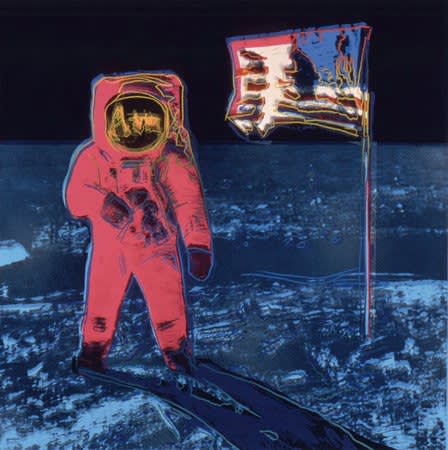
Andy Warhol
Moonwalk, 1987
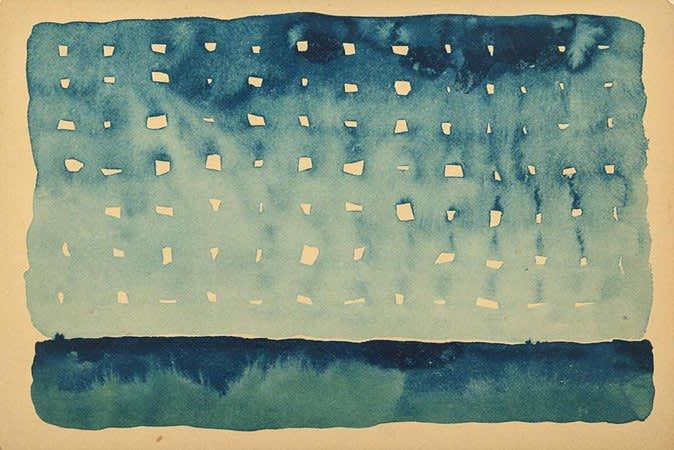
Georgia O'Keeffe
Starlight Night, 1963

NASA
Untitled photograph from the Apollo 11 mission, July 20, 1969

NASA
Untitled photograph from the Apollo 11 mission, July 20, 1969
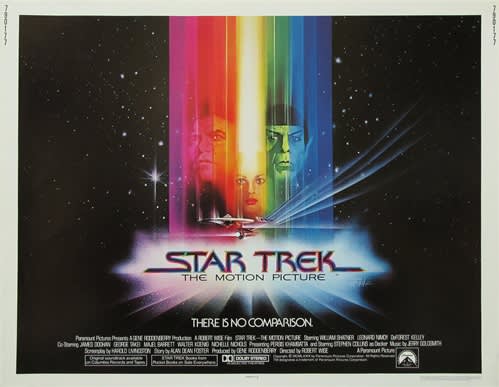
Star Trek
1966
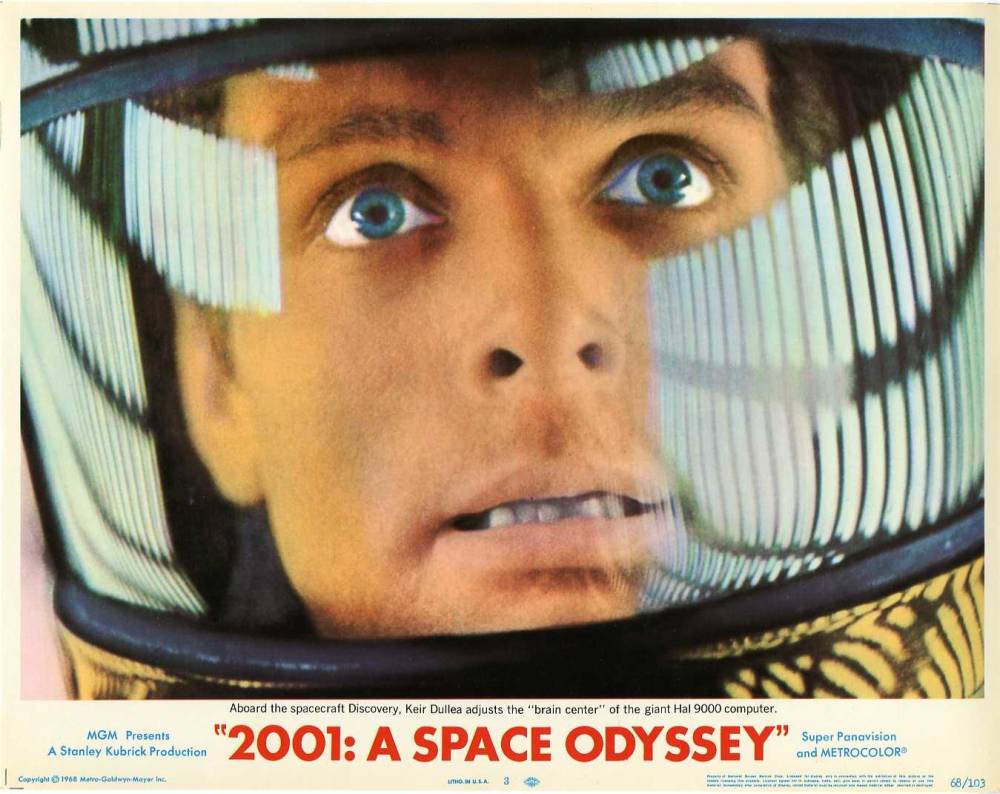
Stanley Kubrick
2001: A Space Odyssey, 1968
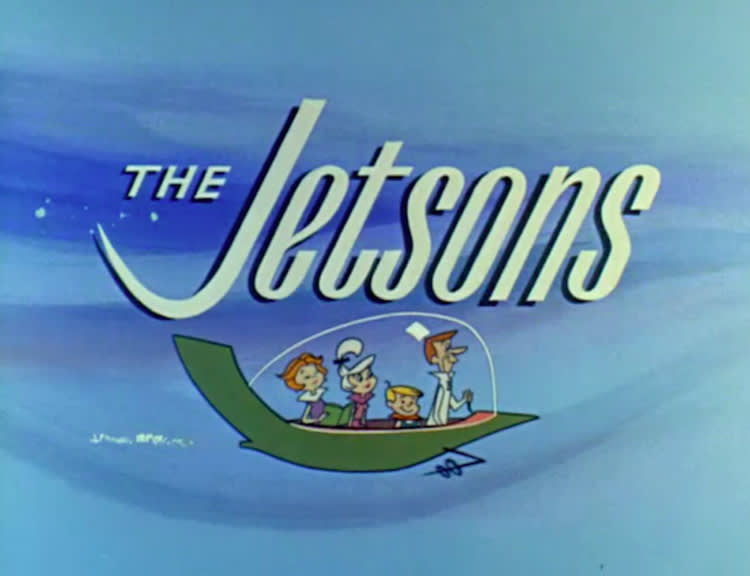
The Jetsons
1962
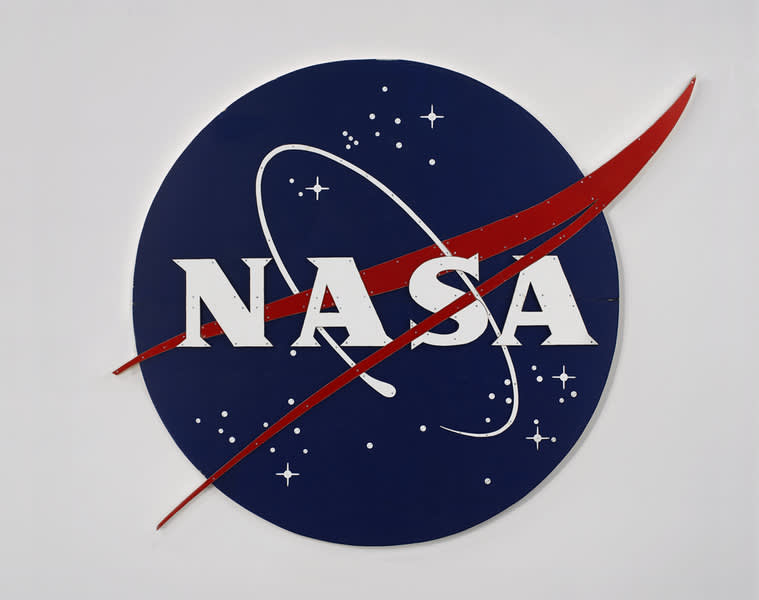
Tom Sachs
Nasa Meatball Logo, Color, 2007

Tom Sachs
Space Program: Mars, at the Park Avenue Armory, 2012

Tom Sachs x NIKECraft
Mars Yard Sneaker, 2012
As previously mentioned, Googie architecture was one of the major movements to arise from the Space Age period. The term originated from a now-closed coffee shop designed by John Lautner in California. This subset of Futurist design takes inspiration from cars and jets, as well as Space and Atomic Age motifs. Stemming from Southern California’s streamline architecture of the 1930s, Googie emphasizes angles, geometric shapes, upswept roofs, and materials like glass and steel. There was a wide emphasis on motion, a major motif throughout the Space Age, with designs resembling flying saucers, boomerangs, and parabolas. One of the best examples of this is the Union 76 Gas Station in Beverly Hills, complete with a sweeping boomerang roof. Said type of architecture was popular for use in motels, coffee shops, and gas stations, and later became an important part of mid-century modern architecture as a whole. Some withstanding examples of the Googie style are the Theme Building at Los Angeles International Airport, designed in 1961, as well as the oldest McDonald’s located in Downey, California, built in 1953, and the Norms restaurant chain in Los Angeles.
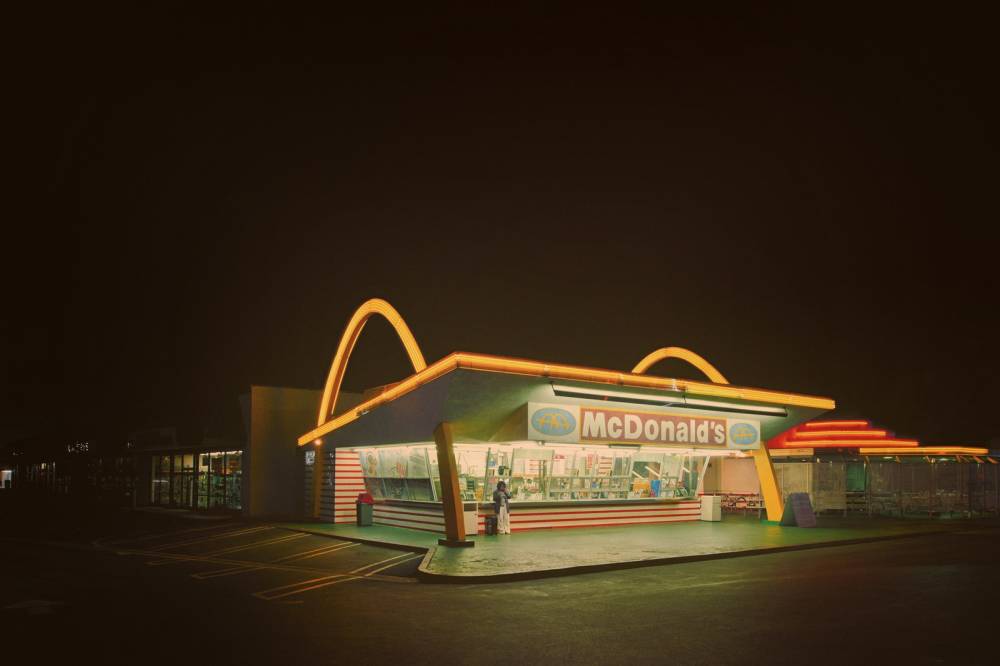
McDonald’s
Downey, California, 1953
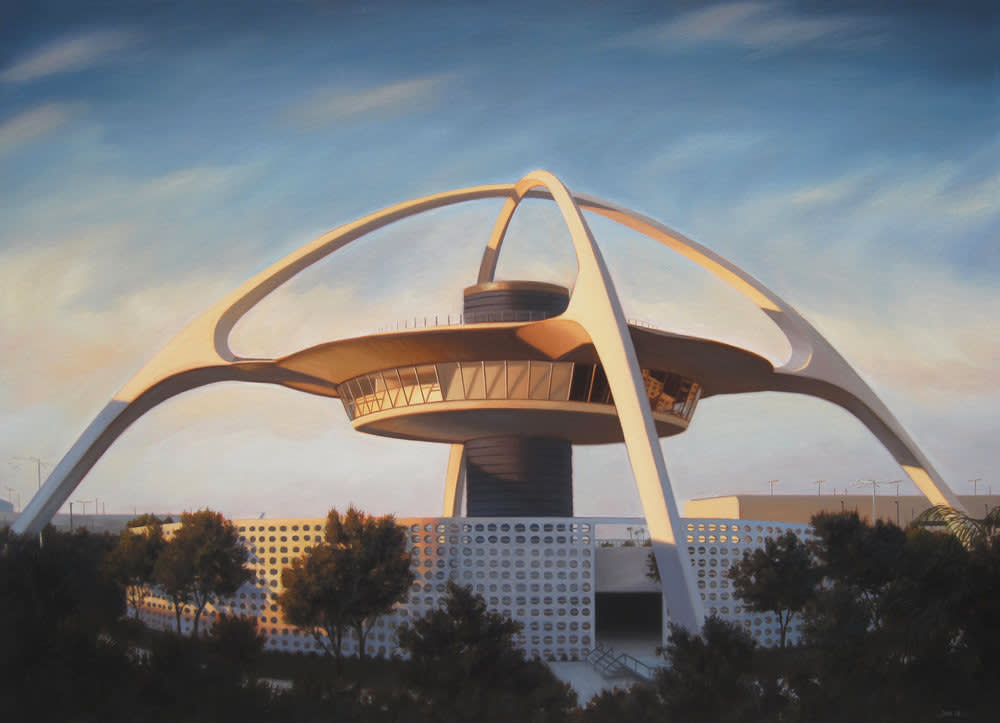
Theme Building
Los Angeles International Airport, 1961
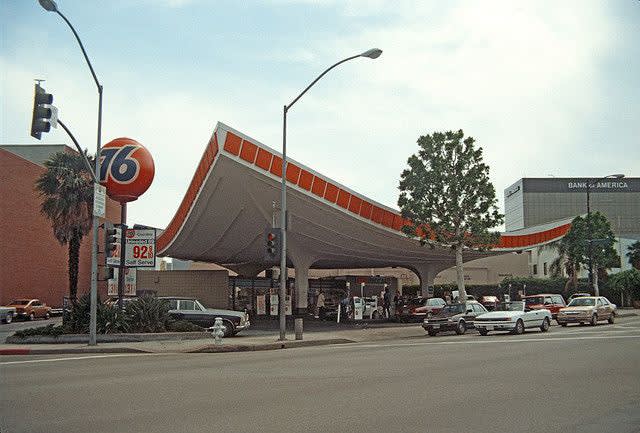
Union 76
Gas Station, 1965

John Lautner
Googies Coffee Shop, 1949
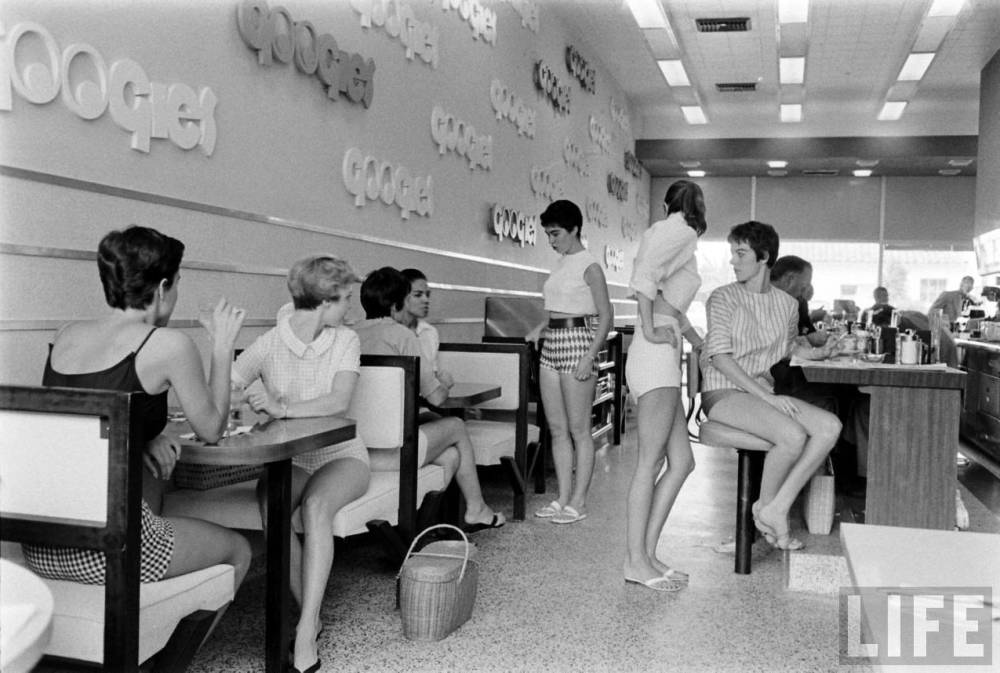
John Lautner
Googies Coffee Shop, 1949
Another important architectural work from the space age doesn’t just take inspiration from space exploration; it assists it. The NASA Vehicle – originally Vertical – Assembly Building, completed in 1966, was designed to assemble the large pre-manufactured components of spaceships like Saturn V and the Space Shuttle. Designed by Morrison-Knudsen architectural firm, it is the largest single-story building in the world. The gorgeous Chemosphere house, designed by John Lautner in 1960, is a work that encapsulates the Space Age fascination with vehicles, science fiction, and movement. Resembling a flying saucer perched atop a 5 foot-wide concrete column, the house can only be reached by funicular and is admired for its ingenuity amongst a sloping landscape. A similar design is seen in Seattle’s iconic, 605-foot high Space Needle, which was completed in 1961 and designed by architects John Graham & Company.
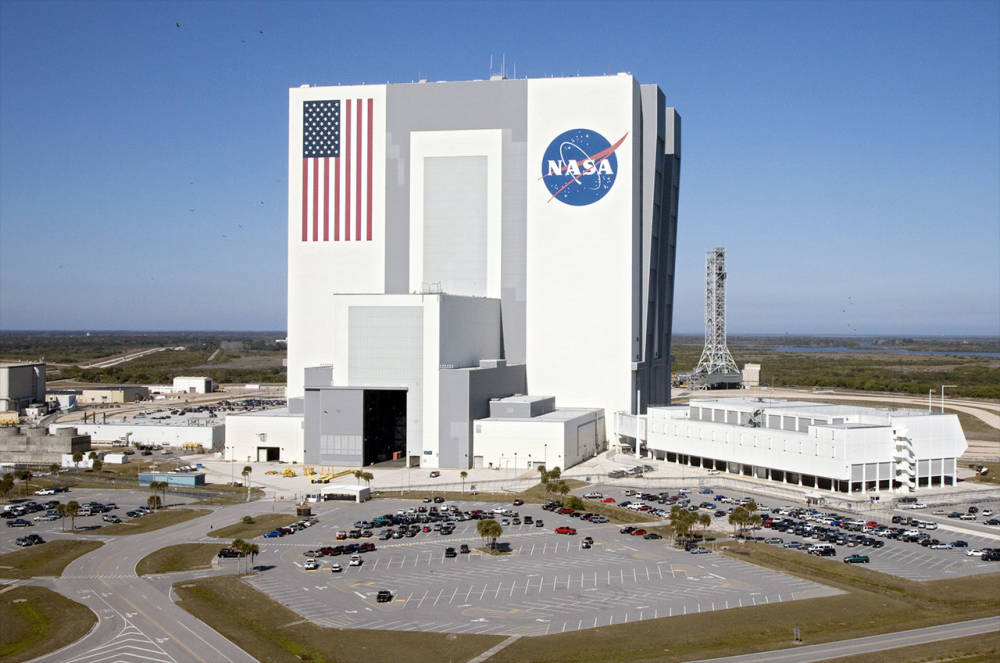
Morrison-Knudsen
The NASA Vehicle (originally Vertical) Assembly Building, 1966
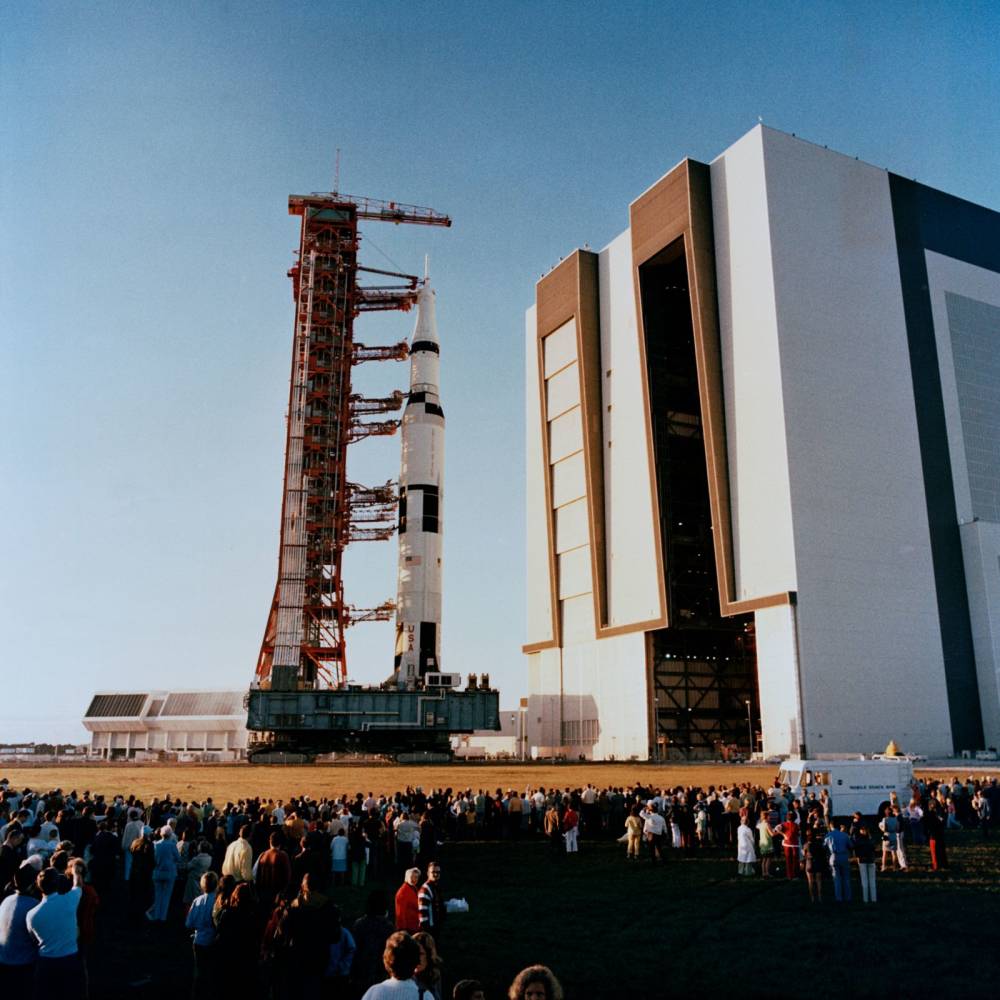
Morrison-Knudsen
The NASA Vehicle (originally Vertical) Assembly Building, 1966
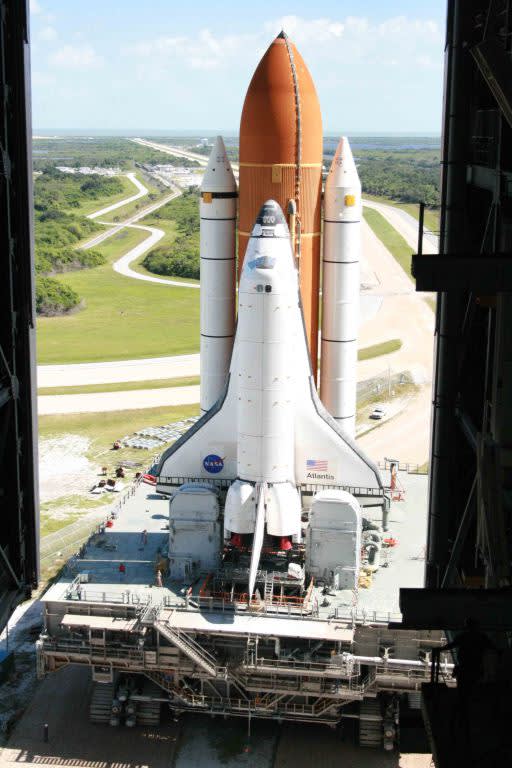
Morrison-Knudsen
The NASA Vehicle (originally Vertical) Assembly Building, 1966

John Lautner
Chemosphere House, 1960

John Graham & Company
Space Needle, 1961
The fashion world was not immune to developments in science and technology, as designers embraced the innovation of the space age beginning in the 1960s, utilizing new materials, imaginative shapes, and atomic patterns.
Pierre Cardin’s Space Age fashion quickly became synonymous with his brand’s aesthetic. In 1950, Cardin opened his own menswear boutique where he debuted new informal styles like collarless jackets and roll neck sweaters. Cardin’s collarless suits later became embalmed in society’s memory through the Beatles, while in 1959 he began producing ready-to-wear utilizing geometric shapes to create his trademark dresses. Cardin used fabrics like wool crepe and jersey, as well as new experimental materials such as vinyl, silver fabric, and large zippers. Cardin’s iconic use of such mediums permeated into other designer’s work, most notable André Courrèges.
Known for his futurist fashion, André Courrèges was inspired by modernism, a well as streamline geometric designs, new technology and fabric innovations. Particularly known for the go-go boot and helping to define the miniskirt, Courrèges’ fall/winter 1964 collection transformed the fashion industry through its futuristic mentality and approach to clothing. Likewise, in 1913 artist Giacomo Balla wrote a manifesto about modernist clothing, while his designs utilized bright colors and easy silhouettes. The clothing was meant to be practical with geometric motifs and vibrant colors throughout.
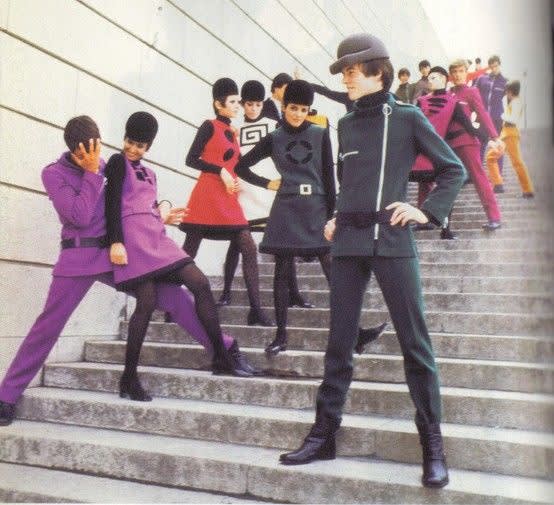
Pierre Cardin
Cosmocorps Collection, 1967
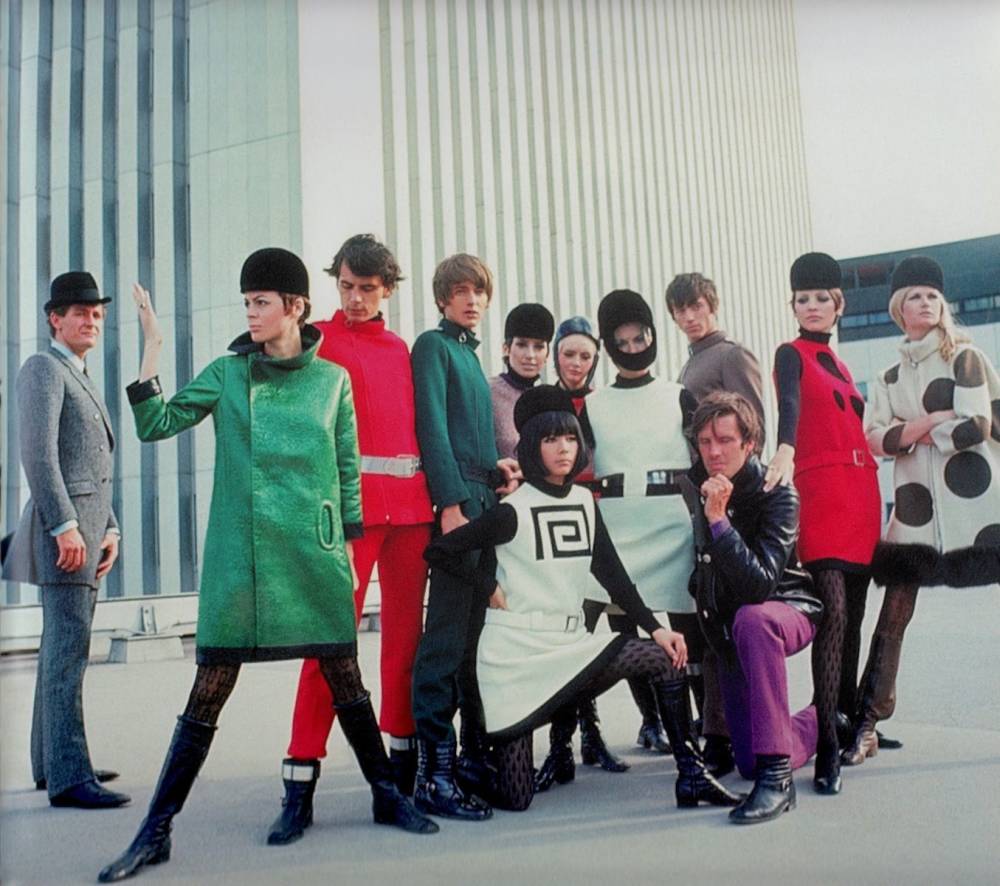
Pierre Cardin
Cosmocorps Collection, 1967
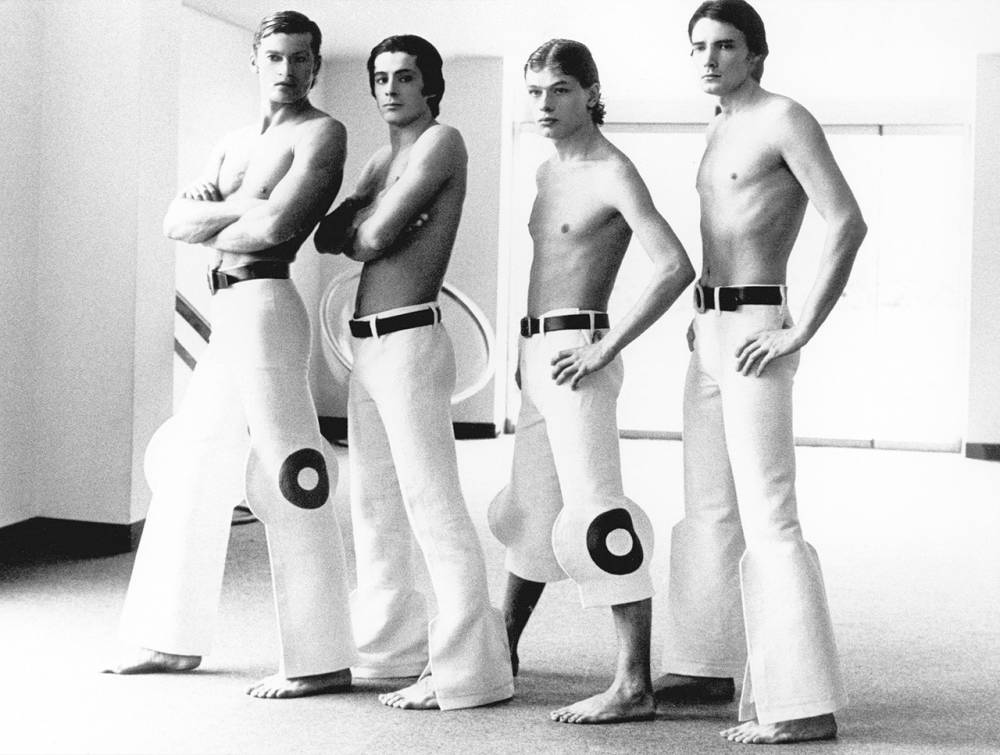
Pierre Cardin
Mens Linen Pants, 1972

Pierre Cardin
1960s
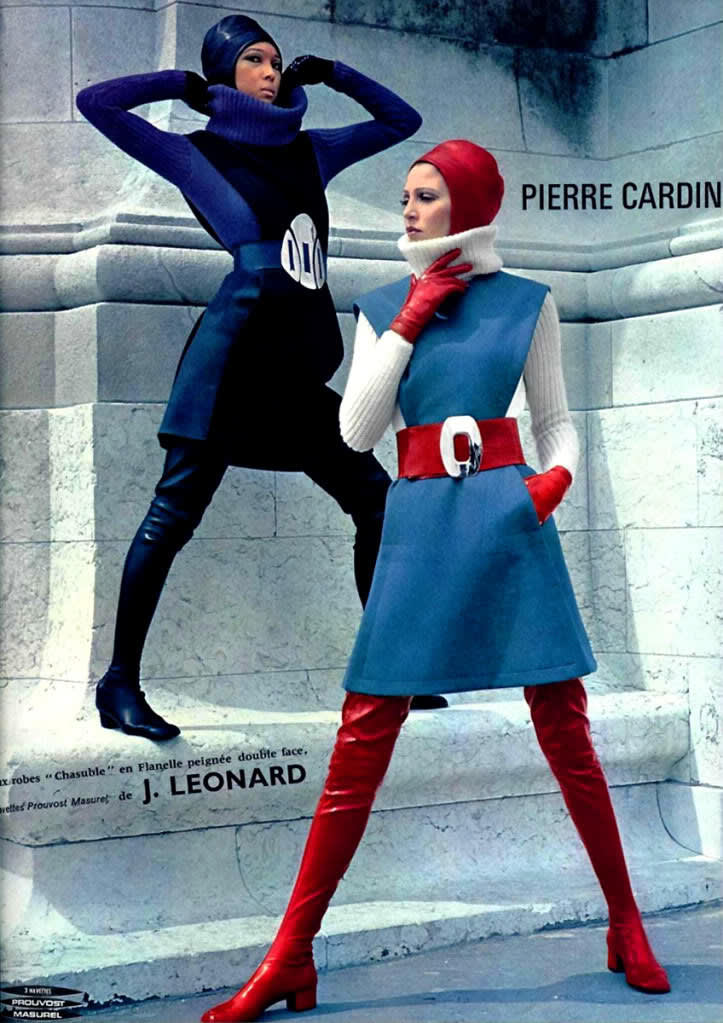
Pierre Cardin
Ad, 1960s
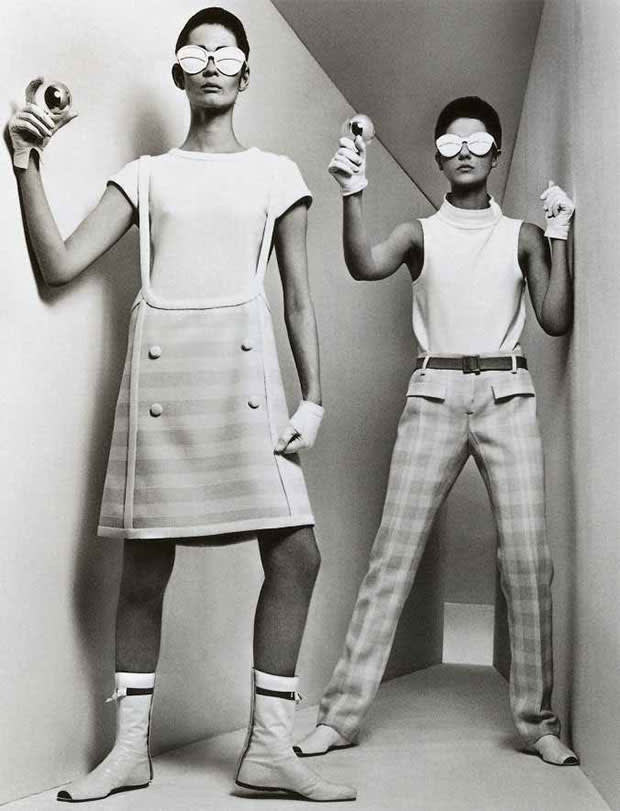
André Courrèges
Space Age Designs, 1964
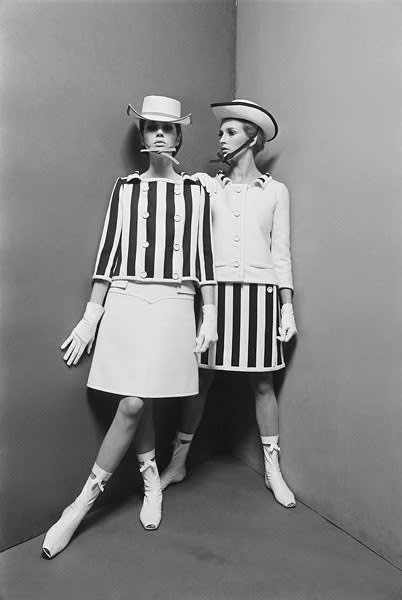
André Courrèges
Ensembles, 1966
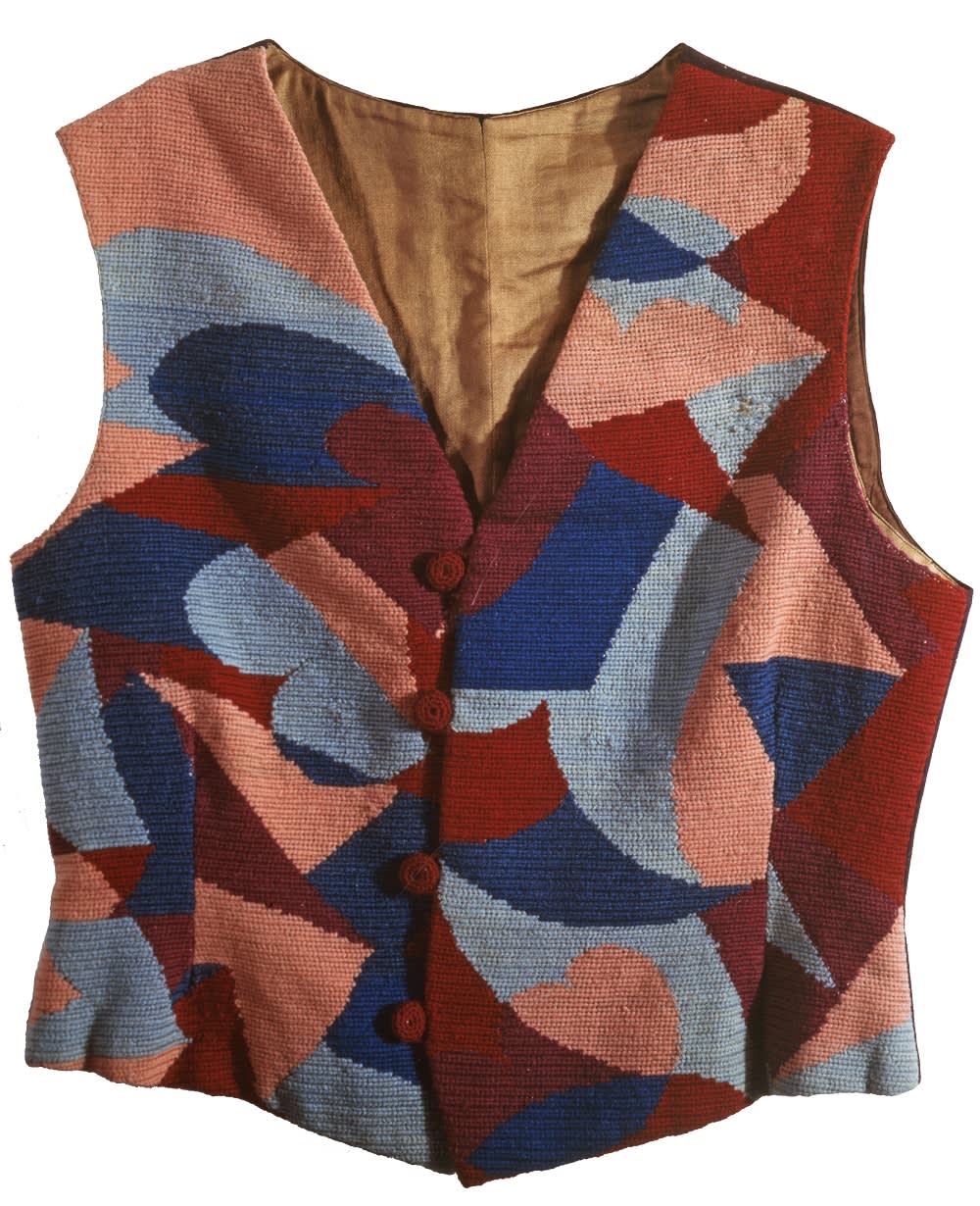
Giacomo Balla
Futurist Vest, 1920s
In contemporary fashion, Giancarlo Zanatta’s famous Moon Boots have become an enduring symbol of the Space Age, despite being created after the movement’s prime. Intended to mimic the appearance of the boots worn by Apollo 11’s astronauts, the footwear uses cordura, a high-performance nylon fabric, along with foam and rubber soles. Issey Miyake’s famous Flying Saucer dress from Spring/Summer 1994 encapsulates the shapes and forms of the Space Age, which were manifested in both fashion and architecture during the period. Meanwhile, Issey Miyake’s Bao Bao bag utilizes plastic tessellating triangles in reflective material in a way that references other iconic Space Age designers, especially Paco Rabanne’s Disc and Link dresses.
Givenchy’s Fall/Winter 1999 collection, under the creative direction of Alexander McQueen, represented Y2K and the turn of the century through ensembles referencing “Android Culture.” Garments were made with neon “wiring” threaded throughout, and models were styled after Tron. In perhaps the most obvious nod to the significance of Space Age design, John Galliano donned an astronaut costume at the end of his Fall/Winter 2006 couture collection for Dior, while under the direction of Raf Simons, Dior made several references to Space Age, including rubber-soled heels for Fall/Winter 2014, and mod fashion with a futurist twist for Resort 2016. Miu Miu’s Resort 2017 collection utilized the galaxy print motif, in a matter similar to the textile and patterns of Atomic Age design, while that same year, Karl Lagerfeld’s Chanel collection was premiered amongst the backdrop of a launching spaceship.
Chanel
Fall/Winter 2017
John Galliano
Dior Couture, Fall/Winter 2006
Givenchy
Fall/Winter 1999
Paco Rabanne
Disc and Link Dress, 1966
Issey Miyake
Flying Saucer Dress, 1994
Giancarlo Zanatta
Moon Boots, 1970s
Dior
Fall/Winter 2014
Dior
Fall/Winter 2014
Dior
Resort 2016
Dior
Resort 2016
Miu Miu
Resort 2017
Miu Miu
Resort 2017
Modern retellings of Space Age design don’t exist solely in high fashion, the trend has trickled down into streetwear, namely in sneakers. Supreme’s Fall/Winter 2016 collection had an astronaut-themed graphic with “Supreme” and “NASA” written across, and Raf Simmons’ “Astronaut Boot” and “Space Sneaker” utilize elements of Space Age design such as holographic materials and bouncy rubber soles.
Supreme
Fall/Winter 2016
Raf Simons
Holographic Space Sneaker, 2013
The monumental theme of space is one that continues to fascinate the Earth’s population. It not only represents space travel, but also scientific discovery, technological advancement, fear of technology, fantasy, and modernity. It is a time that could only arise out of its particular circumstances, and one which has faded out just as quickly as it came, but the impact of this period still makes waves in all forms of art today.
